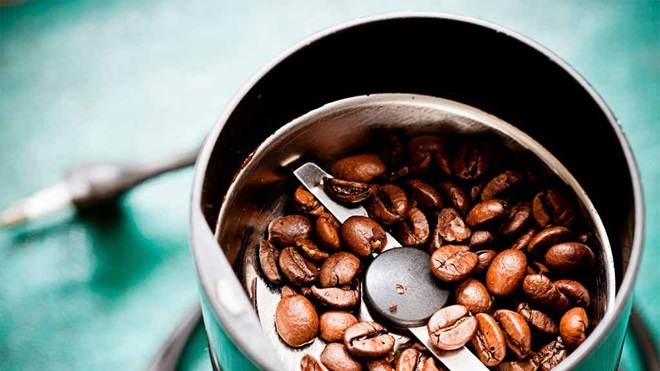For many of us, coffee is a ritual – the smell of the beans, the twirl of the teaspoon, the sweet, life-sustaining caffeine hit. Grinding the beans yourself can take this ritual to a whole new level – a fresher, tastier level.
Having a coffee grinder at home means you can sample local beans and find your favourite blend. You might even end up creating your own, especially if you have a coffee roaster as well.
On this page:
- Blade grinders vs burr grinders
- Features to look for in a coffee grinder
- Coffee grinding tips
- How coarse or fine to grind your coffee beans
- How much do coffee grinders cost?
We're on your side
For more than 60 years, we've been making a difference for Australian consumers. In that time, we've never taken ads or sponsorship.
Instead we're funded by members who value expert reviews and independent product testing.
With no self-interest behind our advice, you don't just buy smarter, you get the answers that you need.
You know without hesitation what's safe for you and your family.
And you'll never be alone when something goes wrong or a business treats you unfairly.
Learn more about CHOICE membership today
Blade grinders vs burr grinders
Blade grinders may cost less and be able to handle other products such as spices, but they'll give your coffee an uneven, sometimes powdery consistency, which could damage your coffee maker. You may not be able to control your grind to your satisfaction. Burr grinders cost more but are worth the extra money because they produce an even grind and a superior flavour.
Burr grinders can use either conical (cone-shaped) or flat burrs to crush the coffee beans. In our experience, conical burrs tend to produce better results, but during testing some models with flat burrs have outperformed their conical counterparts.
Features to look for in a coffee grinder
Doser
Doser style coffee grinders will grind the coffee into a separate chamber, allowing you to fill the filter basket with doses of ground coffee by pulling a lever. It's more suitable if you make multiple cups of coffee at a time.
A coffee grinder without a doser lets you grind coffee straight into the filter basket or in another tub for storage.
Fineness settings
You'll want to be able to adjust the fineness of your grind to suit different beans or coffee makers. Some experimentation may be required to find the best settings for your machine. A grind that's too coarse will have poor flavour and crema; if it's too fine it can block the filter.
A "stepless" machine will have infinite adjustments between grind settings for even more control, but these may be more difficult to keep track of than one with more definite settings. Some inexpensive multi-purpose grinders (suited for spice grinding as well as beans) don't have this feature, and results may not be very even.
Group handle rest
You want your group handle (coffee grinds receptacle) to sit directly in a group handle rest, reducing grind spillover.
Automatic switch-off
If the beans run out, the grinder will stop automatically after a short period of time, which means you don't have to constantly keep an eye on it.
Portion control
A portion control function can dispense the ground coffee in measured amounts.
Shutter
A shutter stops the beans falling out from the hopper when removed.
Cord storage
It's a good idea to keep the power cord away from children's hands, as some of these machines are very heavy and could cause injury if they were to fall off the kitchen bench.
Coffee grinding tips
- When it comes to storing your beans, some experts recommend storing them in the freezer, while others say the fridge is better. You should at least keep your beans in an airtight container and away from direct light.
- Ground coffee deteriorates quickly – grind only as much as you need.
- You may need to play around with the grind settings to suit your particular machine.
- If your grind is too coarse, you'll get a poor flavour and crema (the foamy layer on top of the coffee).
- If the grind is too fine, it can block the filter.
- Start with a grind size that is the consistency of table salt when rubbed between your finger and thumb.
- Clean the hopper and the ground coffee container regularly, as coffee is an oily substance and can go rancid after a while.
How coarse or fine to grind your coffee beans
- Coarse grinds suit percolators.
- Medium grinds are good for coffee plungers.
- Fine grinds are good for filter and espresso coffee.
- Extra fine grinds are best for Turkish coffee.
How much do coffee grinders cost?
Coffee grinders tend to range between $14 and $890 in price, and burr grinders start at about $100.
Stock images: Getty, unless otherwise stated.



